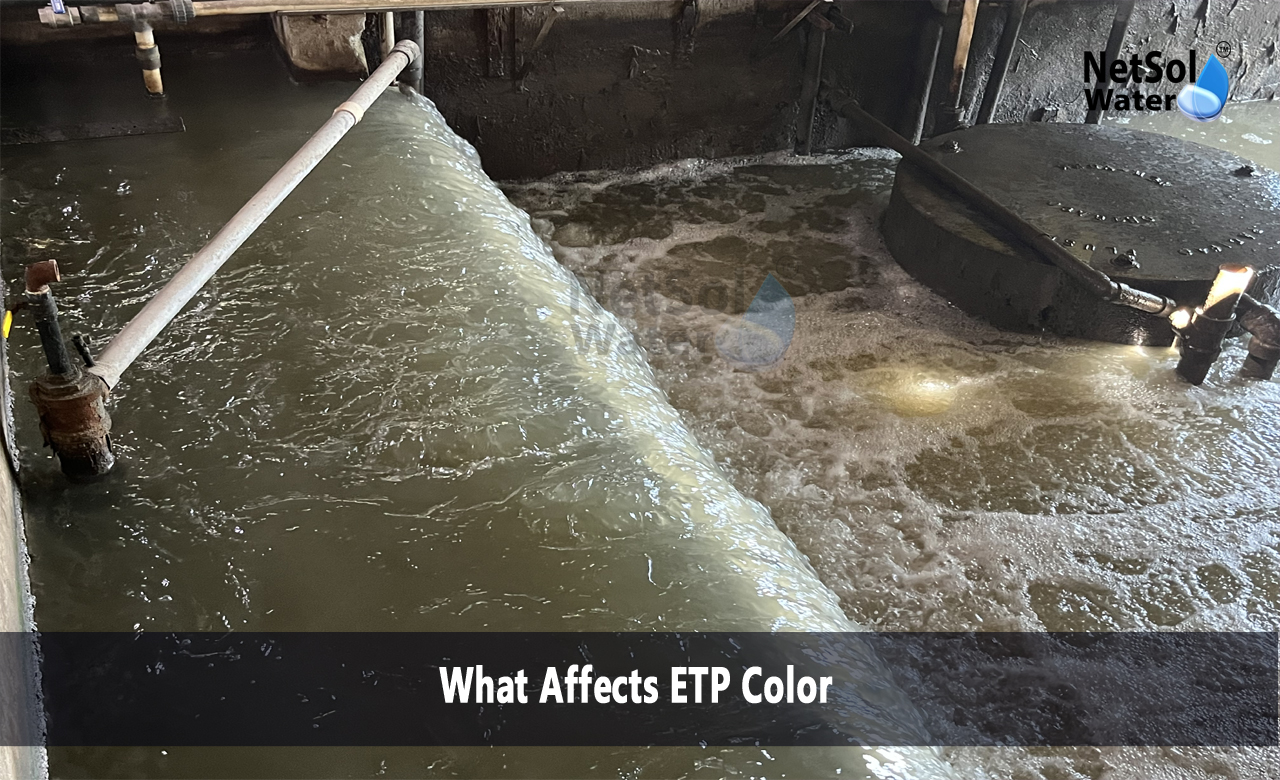What Affects Effluent Treatment Plant Color?
Effluent Treatment Plants are extremely important application in treating industrial effluent prior to its release into the environment. Color of effluent is one of the most important parameters to decide the success of the treatment process. Color in treated water is an indicator of poor treatment, contamination, or chemical imbalance. Measurement of variables influencing ETP color can guide the operators towards remedial action to enhance the treatment efficiency.
Source and Nature of Wastewater
The natural color of wastewater supplied to an ETP varies with the nature of the industry that produces the effluent. Colored wastewater is generated by certain industries as the effluent carries dyes, suspended solids, or organic solids.
· Textile and dye industries generate high-strength synthetic dye effluent and hence the wastewater will be highly colored and hard to discharge.
· Paper and pulp mills discharge effluent containing lignin and tannins, the reasons for brown color.
· Pharmaceutical and chemical mills will discharge wastewater with organic content of a complex nature, thus diversified colors.
· Food processing plants discharge wastewater with natural pigments, oil, and organic matter, leading to color and turbidity.
Since wastewaters include various types of industries, intensity of the color as well as the means of its elimination will also change in accordance with the same.
Organic and Inorganic Compound Presence
The color of wastewater can be organic and inorganic in nature.
· Organic wastes like tannins, phenol, and humic acids produce brown, yellow, or colored effluent.
· They exist in agriculture run-off waste, paper factories, and brewing and beverage-making units.
· Heavy metals like iron, manganese, and inorganic chemicals may cause red, black, or greenish color in the effluent. Some metal salts react with other chemicals in the wastewater and alter the color.
Inadequate decomposition of organic matter in biological treatment, or defective precipitation of inorganic substances, may render them responsible for residual coloration of treated effluent.
Efficiency of Treatment Process
An ETP usually consists of a group of treatment processes, which are physical, chemical, and biological processes. In the event of faulty or inefffective processes, the effluent can possess undesirable color.
· Efficiency of coagulation and flocculation: In the absence of proper dosing of coagulants such as alum, ferric chloride, or PAC, suspended solids and particles responsible for color may not be efficiently removed.
· Biological treatment effectiveness: Microbial action is directly responsible for the degradation of organic pollutants. Indications of unhealthy microbes or poor aeration can result in incomplete degradation, and there is color residue remaining in the effluent.
· Oxidation process: Oxidizing agents such as chlorine, ozone, or hydrogen peroxide propel the degradation of color-forming substances. As a result of inadequate oxidation, part of dyes and organics is not removed from the effluent.
· Efficiency of filter system: Sand filter, activated carbon filter, and membrane filter are responsible for removal of color from the treated effluent. Filters become inefficient if clogged or not maintained regularly, resulting in color carryover.
The operations have to be controlled and maintained from time to time to get optimum removal of color.
pH and Chemical Balance
pH of wastewater determines the solubility and reactivity of the color-causing substances.
· Acidic (low pH) conditions will increase the solubility of some organic dyes and metal ions, and thus render them more troublesome to remove.
· Alkaline (high pH) conditions will cause precipitation of some metal oxides, which cause color change in effluent.
If pH is not controlled suitably in the treatment process, chemical reactions don't occur as predicted and removal of color becomes unsatisfactory.
Sludge Management and Settling
Irregular sludge management leads to color problems in effluent too.
· Sludge settling in clarifiers inadequately leads to solids of suspension being recirculated, adding turbidity and color.
· Biomass in excess that gets deposited in biological treatment tanks inhibits microbial activity, leading to ineffective degradation of organic matter.
· Carryover of sludge into final treated water may cause cloudiness or coloration.
All these problems can be prevented by frequent removal of sludge, effective aeration, and effective microbial balance.
Residual Dyes and Industrial Chemical Use
Some industries use dyes, pigments, and biodegradation-resistant chemical additives. Some dyes are especially designed to not degrade color easily, thus cannot be degraded with conventional treatment processes.
· Synthetic dyes used in textile and printing that are resistant to biodegradation.
· Metallic pigments used in some manufacturing industries can cause coloring to persist.
· Petrochemical industry-based petroleum chemicals may cause dark color or greasiness of color to effluent.
These needs higher treatment processes such as electrocoagulation, activated carbon adsorption, or advanced oxidation processes (AOPs) in order to degrade stable industrial dyes.
Conclusion
Effluent color in an ETP is defined by some parameters such as the nature of wastewater, presence of organic/inorganic compounds, effectiveness of the treatment process, pH, sludge handling, and industry-employed chemicals. Effective control of these variables and utilizing proper treatment processes can facilitate the possibility of cleaner and environment-friendly effluent.
Periodic testing, maintenance, and technology improvement in treatment can improve the effectiveness of color removal, maintaining environmental norms and minimizing pollution.
Do you need an advice or assistance on selecting the best water and waste water treatment unit? We have solutions for all your problems!
Let us know your problem, our experts will make sure that it goes away.
For an assistance or related query,
Call on +91-965-060-8473 Or write us at enquiry@netsolwater.com



